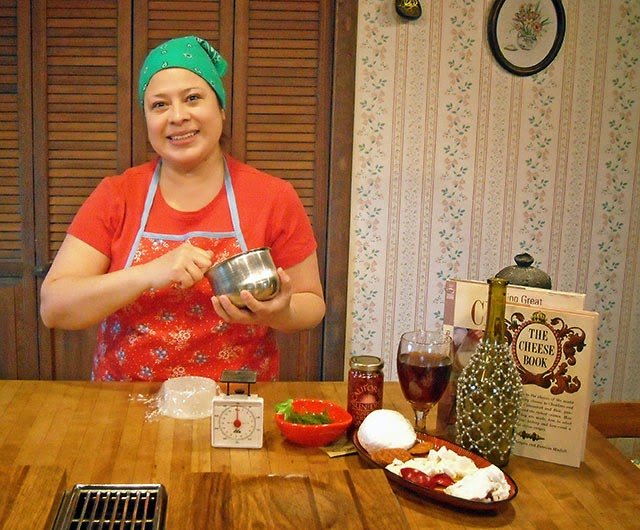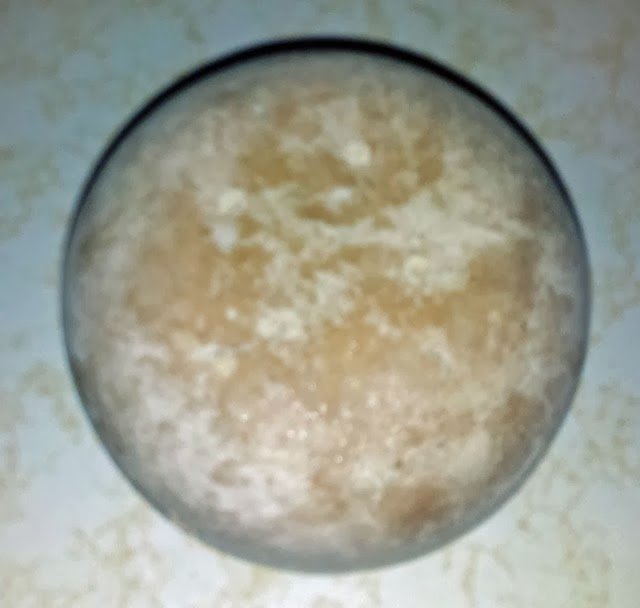 |
| Haydee and Gordon’s ranch |
Is it just me, or does this look like paradise to you? Haydee Chavis and her husband Gordon live on this gorgeous ranch with 17 goats* and a young Clysedale named Ellie. Their plan is to run a carriage service when Ellie is a few years older and to build a cheese business.
 |
| Gordon training Ellie |
Haydee entered our 35th Anniversary Essay Contest last year and I’m (slowly but surely) interviewing all the entrants in the contest. I like to start the interview with their essay because it gives you a snapshot of who they are in their own words:
 |
| Haydee Chavis |
Haydee’s Essay
TURN AND FACE THE STRANGE
The, hands down, biggest change in my life happened in 2009, when my husband and I moved from Los Angeles, California to a ranch in Northern Colorado that had been vacant after his father passed away. I am – was, rather – 100% city girl. I’ve never roped or milked anything in my life, nor thought I ever would. Yet, as fate would have it, I wound up moving to the country to raise dairy goats because, A. The ranch needed something “agricultural” on it to avoid a sharp tax increase, and B. My husband I love goat cheese.
We started out with six young dairy goats and about 50 books on how to raise them. After the last doe freshened, we were swimming in goat milk, and it was clear the days of talking about making cheese were over. The first recipes were simple–gleaned from the goat books–using vinegar to raise the curds. The results, while inconsistent, were tasty enough to encourage me to keep at it.
I learned about rennet, cultures and cheese making suppliers, including Ricki, the Cheese Queen, who remains my #1 source for ingredients. I acquired so much stainless steel, my kitchen looked like a futuristic cityscape. It was about this time, while I was cutting the curds for my first Gouda, that I was struck with the thought; “I’m not just making dinner here, I’m making food!”
The distinction blew me away! I recalled visiting pioneer homes, with hand crank butter churns and washboards on display, and, like everybody else, I would exclaim; “It sure was hard work to live back then!” However, there, in my kitchen with my cheese press and milk from my own goats, I understood it wasn’t mere labor, but a way of life. Survival depended on what you could make from what you could raise on your own property, and, to some extent, I am doing just that.
So I’m hardly Laura Ingalls, with my milking machine, electric stove and mountain of stainless steel, but I’ve often sat down to a cheese sandwich on bread I baked myself with a glass of milk, and marveled not only at the fact that most of the ingredients originated several yards from the table where they were being eaten, but I was involved in every step of the process down to assisting with the birth of the goats whose milk went into the cheese. For a city girl who, until recently, ate in restaurants at least three times a week, this is nothing short of miraculous.
Family and friends are naturally curious about cheese making and when I explain the process, they are astonished, and will invariably say; “Wow! That is a lot of work!” Funny, though; I don’t see it as work at all. It’s just what I’m doing with my life now. I am, as the son of one of our new friends calls me, “The Goat Cheese Lady.”
What did you do in Los Angeles before you moved to Colorado?
I was the office manager for a dentist in Santa Monica. My husband was an actor and writer, who supported his career by working as a motorcycle courier and process server. Gordon had a lot of experience with horses, since his parents used to raise Clydesdales, but he never actually lived in the country before in his life.
I was born in El Salvador, in Central America, and moved to LA with my family when I was 7 years old. I also lived in Mexico for a short time as a teenager, and saw many people raising goats, but had never done it myself, until now.
What kinds of cheese are you making?
I make Chévre, the soft goat cheese: plain or with herbs, nuts and berries. I have a popular mozzarella with sun dried tomatoes, and Queso Blanco, a Latin American farm cheese which is good in enchiladas and other South of the Border recipes.
I have, over the past two years, started making Cheddar and Gouda. I have a wine-infused Gouda as well, that’s become something of a hit. The more milk I have, the more I can experiment, so things change all the time, but the Chévres, Mozarella and Queso Blanco have been big favorites, and it looks like the Cheddar and Gouda are also here to stay.
Where are you aging your cheese?
Aging the cheese has been tricky. We don’t really have a place that’s cool, dark and rodent free, so most of the process has been taking place in the kitchen. The problem is that the air is so very dry here, that any more than two months will make the Cheddar and Gouda start to dry out. Gordon is going to build a small underground brick bunker to see if we can age our cheese longer, but that will have to wait until the ground thaws.
Ultimately, when we get a commercial kitchen, we want to dig into the granite cliff right behind our house, and hopefully, we will be able to mount the cheese racks directly into the stone, so the moisture from the rock can help us prevent drying.
 |
| Fiona, their herd queen |
What is your goal?
We start kidding season this week, so things are busy. Our goal in this cheese business is to ultimately get a legal dairy and food prep kitchen, so we can sell our best cheeses in specialty markets. Anything beyond that would be too much work for the two of us, and might compromise the quality of our product.
Right now, all the milk comes from our herd that lives and browses on our ranch, and unlike cheese made from milk that comes from many different goat herds and/or herds that aren’t allowed to browse, there are more “peaks and valleys” in the flavor. Our target to to find the “sweet spot” with the number of animals it will take to make it worth the cost of licensing and building a commercial facility. We’re projecting somewhere around 20 milking does.
* Four breeding bucks, three wethers, to act as
companions and goat herds, 6 adult does, all of which are pregnant this
year, and 4 doelings. Their goal is to have 15-20 milking does, (two of
our does are ‘through milkers”, and don’t have to freshen every year).


















































































































































